Nickname(s) "Uncle John" Other work Teacher | Years of service 1837–1864 Name John Sedgwick | |
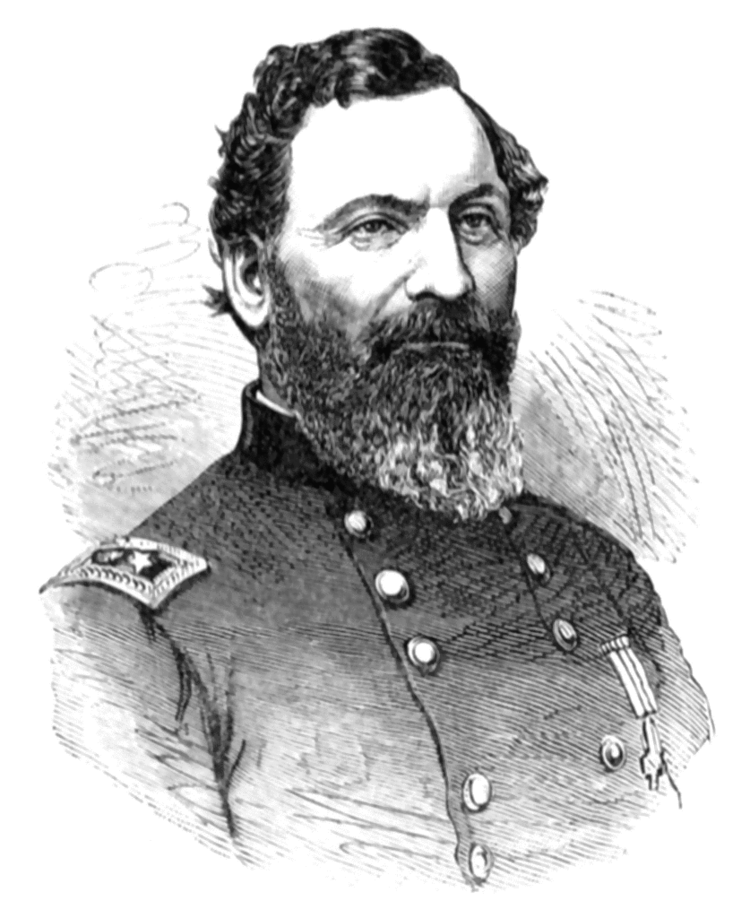 | ||
Born September 13, 1813Cornwall, Connecticut ( 1813-09-13 ) Battles/wars Seminole WarsMexican-American WarUtah WarIndian WarsAmerican Civil War † Battles and wars Allegiance United States of America, Union Similar People Jubal Early, A P Hill, Robert E Lee, Cadmus M Wilcox | ||
Major general john sedgwick
John Sedgwick (September 13, 1813 – May 9, 1864) was a teacher, a career military officer, and a Union Army general in the American Civil War.
Contents
- Major general john sedgwick
- Andy o donnell and john sedgwick s xtra factor 29 09 09
- Early life and education
- American Civil War
- Death
- Legacy
- Citations
- References
He was wounded three times at the Battle of Antietam while leading his division in an unsuccessful assault, causing him to miss the Battle of Fredericksburg. Under his command, the VI Corps played an important role in the Chancellorsville Campaign by engaging Confederate troops at the Second Battle of Fredericksburg and the Battle of Salem Church. His corps was the last to arrive at the Battle of Gettysburg, and thus did not see much action. Sedgwick was killed by a sharpshooter at the Battle of Spotsylvania Court House on May 9, 1864, making him and Major General John F. Reynolds (July 1, 1863, Gettysburg) the highest-ranking United States soldiers to be killed in the war. He is well remembered for his ironic last words: "They couldn't hit an elephant at this distance."
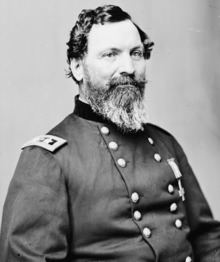
Andy o donnell and john sedgwick s xtra factor 29 09 09
Early life and education
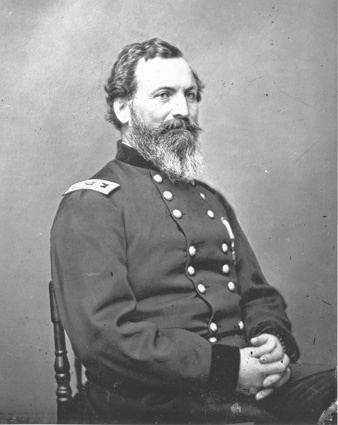
Sedgwick was born in the Litchfield Hills town of Cornwall, Connecticut. He was named after his grandfather, John Sedgwick (brother of Theodore Sedgwick), an American Revolutionary War general who served with George Washington. He attended Sharon Academy for 2 years and Cheshire Academy in 1830–31, After teaching for two years, he attended the United States Military Academy, graduated in 1837 ranked 24th of 50, and was commissioned a second lieutenant in the U.S. Army's artillery branch. He fought in the Seminole Wars and received two brevet promotions in the Mexican-American War, to captain for Contreras and Churubusco, and to major for Chapultepec. After returning from Mexico he transferred to the cavalry and served in Kansas, in the Utah War, and in the Indian Wars, participating in 1857 in a punitive expedition against the Cheyenne.
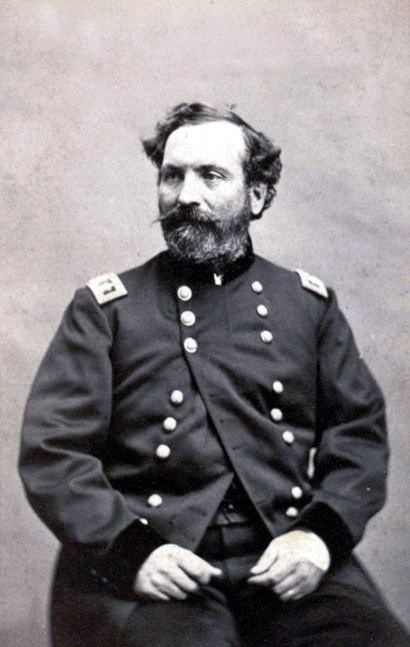
In the summer and fall of 1860, Sedgwick commanded an expedition to establish a new fort on the Platte River in what is now Colorado. This was a remote location with no railroads, and all supplies having to be carried long distances by riverboat, wagon train or horseback. Even though many of these supplies failed to arrive, Sedgwick still managed to erect comfortable stone buildings for his men before the cold weather set in.
American Civil War
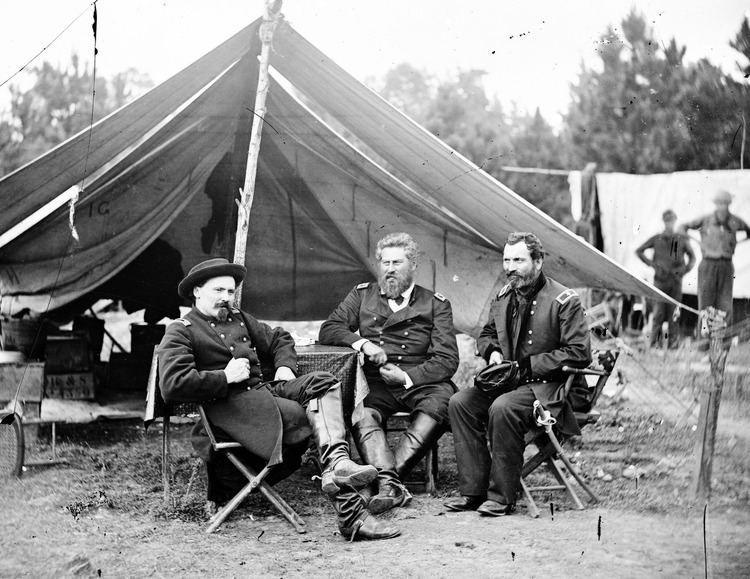
At the start of the American Civil War, Sedgwick was serving as a colonel and assistant inspector general of the Military Department of Washington. He missed the early action of the war at the First Battle of Bull Run, recovering from cholera. Promoted to brigadier general on August 31, 1861, he commanded the 2nd brigade of Maj. Gen. Samuel P. Heintzelman's division in the Army of the Potomac, then his own division, which was designated the 2nd division of the II Corps for the Peninsula Campaign. In Virginia, he fought at Yorktown and Seven Pines and was wounded in the arm and leg at the Battle of Glendale. He was promoted to major general on July 4, 1862.
In the Battle of Antietam, II Corps commander Maj. Gen. Edwin V. Sumner impulsively sent Sedgwick's division in a mass assault without proper reconnaissance. His division was engaged by Confederate forces under Maj. Gen. Thomas J. "Stonewall" Jackson from three sides, was routed, and fell back with barely half the men it had started with. Sedgwick himself was hit by three bullets, in the wrist, leg, and shoulder, and was out of action until after the Battle of Fredericksburg.
From December 26, 1862, he briefly led the II Corps and the IX Corps, and then finally the VI Corps of the Army of the Potomac, which he commanded until his death in 1864. During the Battle of Chancellorsville, his corps faced Fredericksburg in an initial holding action while Maj. Gen. Joseph Hooker's other four corps maneuvered against Robert E. Lee's left flank. He was slow to take action, but eventually crossed the Rappahannock River and assaulted Maj. Gen. Jubal Early's small force on Marye's Heights on May 3 during the Second Battle of Fredericksburg. Moving west slowly to join forces with Hooker and trap Lee between the halves of the army, he was stopped by elements of Lee's Second Corps (under Maj. Gen. J.E.B. Stuart, following the wounding of Jackson) at the Battle of Salem Church, forcing his eventual retreat back over the Rappahannock.
At the Battle of Gettysburg, his corps arrived late on July 2, and as a result only a few units were able to take part in the final Union counterattacks in the Wheatfield. It was not kept together as a unit during the second and third days of the battle, its brigades scattered around to plug holes in the line. While much of Sedgwick’s VI Corps was held in reserve at Gettysburg, it performed exceptionally at the Second Battle of Rappahannock Station in November, capturing four field pieces, eight stands of enemy colors and 1,700 prisoners.
In the 1864 Overland Campaign, the VI Corps was on the Union right at the Battle of the Wilderness and defended against assaults by Lt. Gen. Richard S. Ewell's Second Corps.
Death
Sedgwick fell at the beginning of the Battle of Spotsylvania Court House, on May 9, 1864. His corps was probing skirmish lines ahead of the left flank of Confederate defenses and he was directing artillery placements. Confederate sharpshooters were about 1,000 yards (900 m) away, and their shots caused members of his staff and artillerymen to duck for cover. Sedgwick strode around in the open and was quoted as saying, "What? Men dodging this way for single bullets? What will you do when they open fire along the whole line?" Although ashamed, his men continued to flinch and he said, "Why are you dodging like this? They couldn't hit an elephant at this distance." Reports that he never finished the sentence are apocryphal, although the line was among his last words. He was shot moments later under the left eye and fell down dead.
Sedgwick was the highest-ranking Union death in the Civil War. Although Major General James B. McPherson was in command of an army at the time of his death and Sedgwick of a corps, Sedgwick had the most senior rank by date of all major generals killed. Upon hearing of his death, Lt. Gen. Ulysses S. Grant, flabbergasted by the news, repeatedly asked, "Is he really dead?"
Legacy
Sedgwick's reputation was that of a solid, dependable, but relatively unaggressive general. He was well liked by his soldiers, who referred to him affectionately as "Uncle John". His death was met by universal sorrow; even Robert E. Lee expressed his sadness over the fate of an old friend. George G. Meade wept at the news. Ulysses S. Grant characterized Sedgwick as one who "was never at fault when serious work was to be done" and he told his staff that the loss for him was worse than that of an entire division.
Sedgwick is buried near his birthplace of Cornwall Hollow, Connecticut. An equestrian statue honors him and the VI Corps at Gettysburg National Military Park.
There is a monument of General Sedgwick at West Point. Academy legend has it that a cadet who spins the rowels of the spurs on boots of the statue at midnight while wearing full parade dress gray over white uniform under arms will have good luck on his or her final exam.
The following were named in his honor:
A major street in the Bronx, in New York City, is named after him. An east–west street in Washington, D.C. near American University is also named in his honor, as is another on Chicago's near north side. Grand Army of the Republic Post #4 in Keene, New Hampshire; Post #12 in Milwaukee, Wisconsin; Post #17 in Santa Ana, California; and Post #37 in York, Pennsylvania are all named after him. Also, a junior high-school (John Sedgwick Junior High "Home of the Generals") in Port Orchard, Washington, was named after him.
In the 1990 film Dances with Wolves, Lt. John Dunbar (Kevin Costner) stays at a fictional Fort Sedgwick, presumably named after General Sedgwick. The fort in the film may have been inspired by the Fort Sedgwick built in Colorado in 1860.
Farley, his headquarters at the time of the Battle of Brandy Station, was listed on the National Register of Historic Places in 1976.
